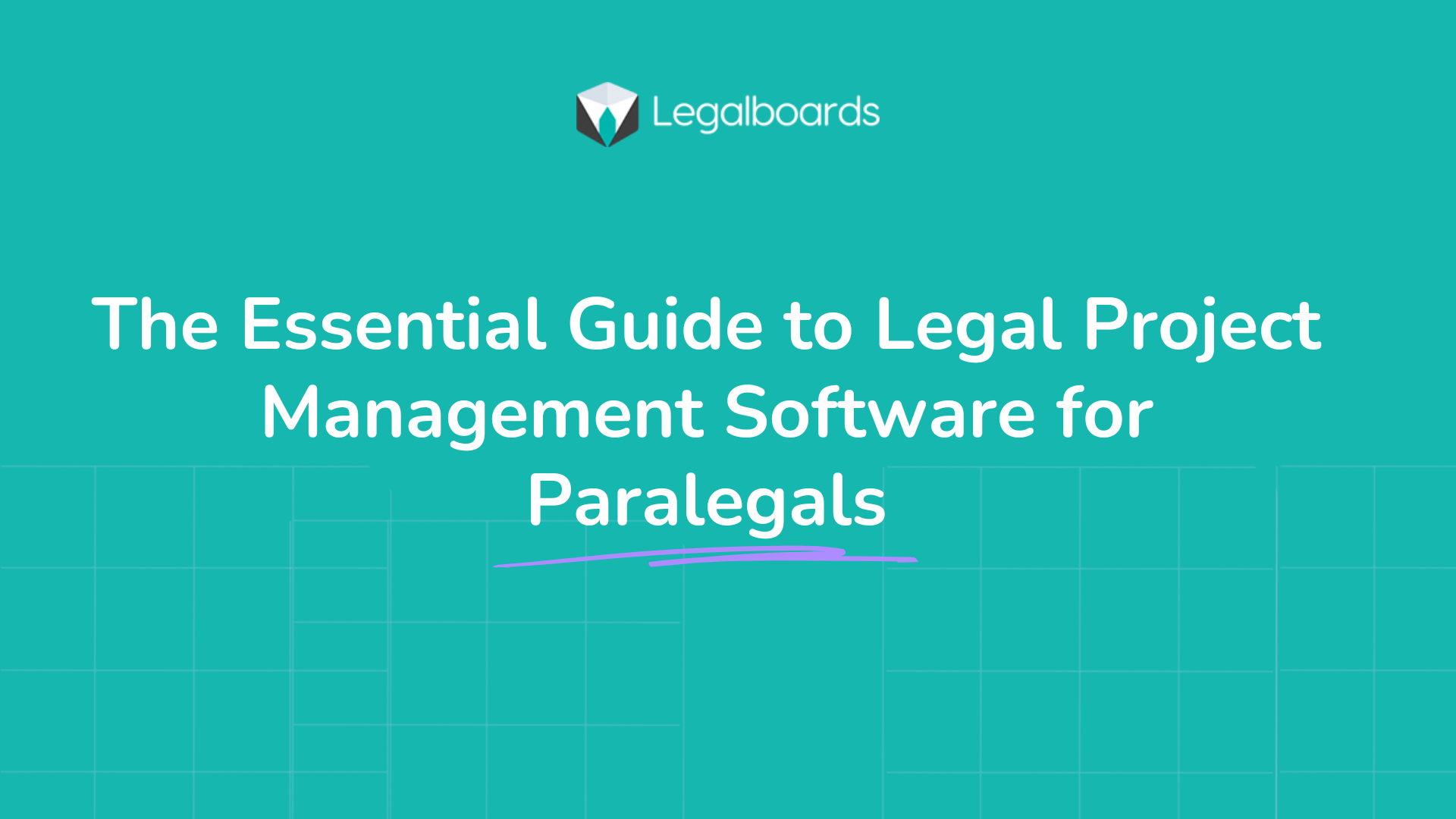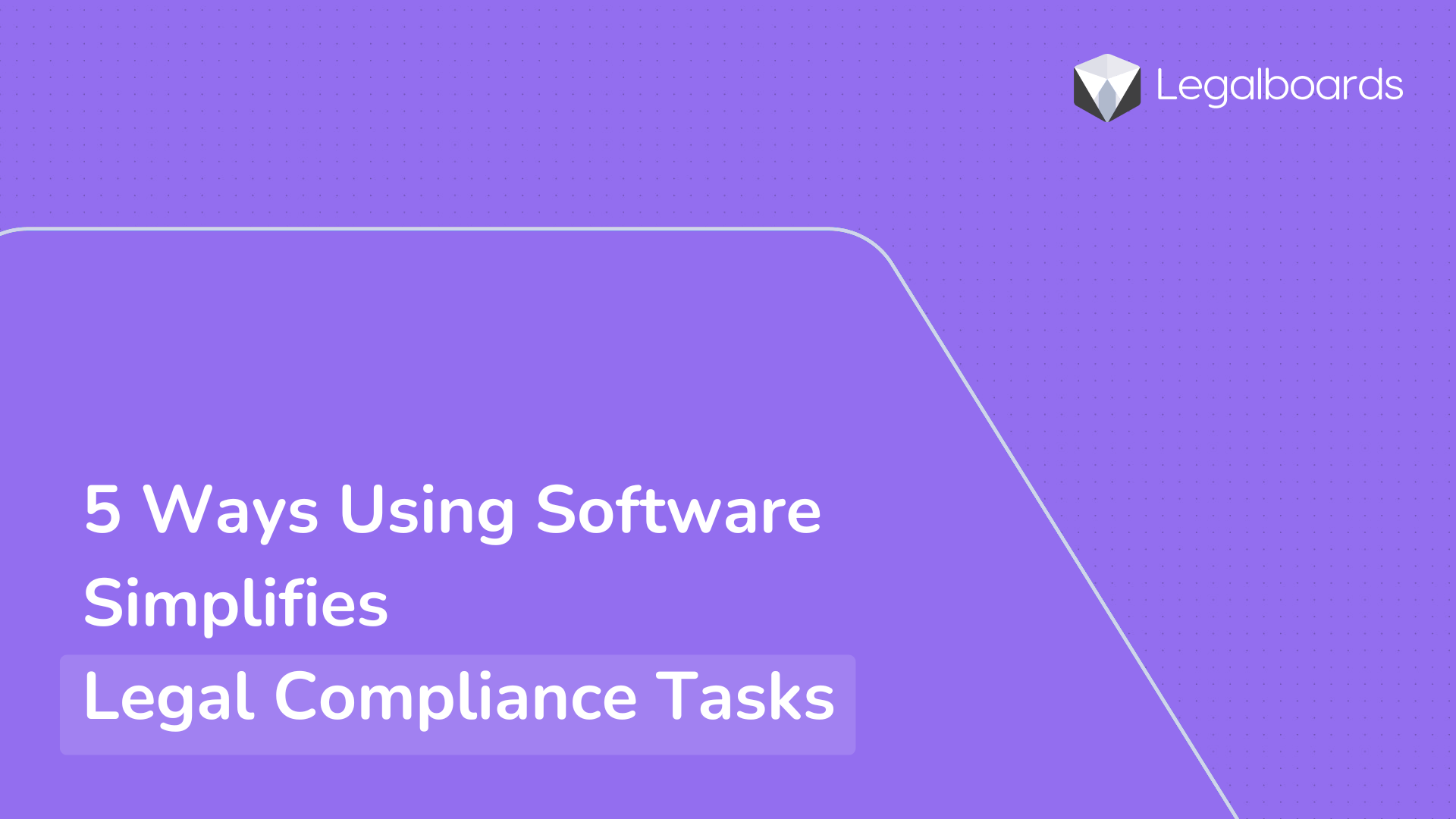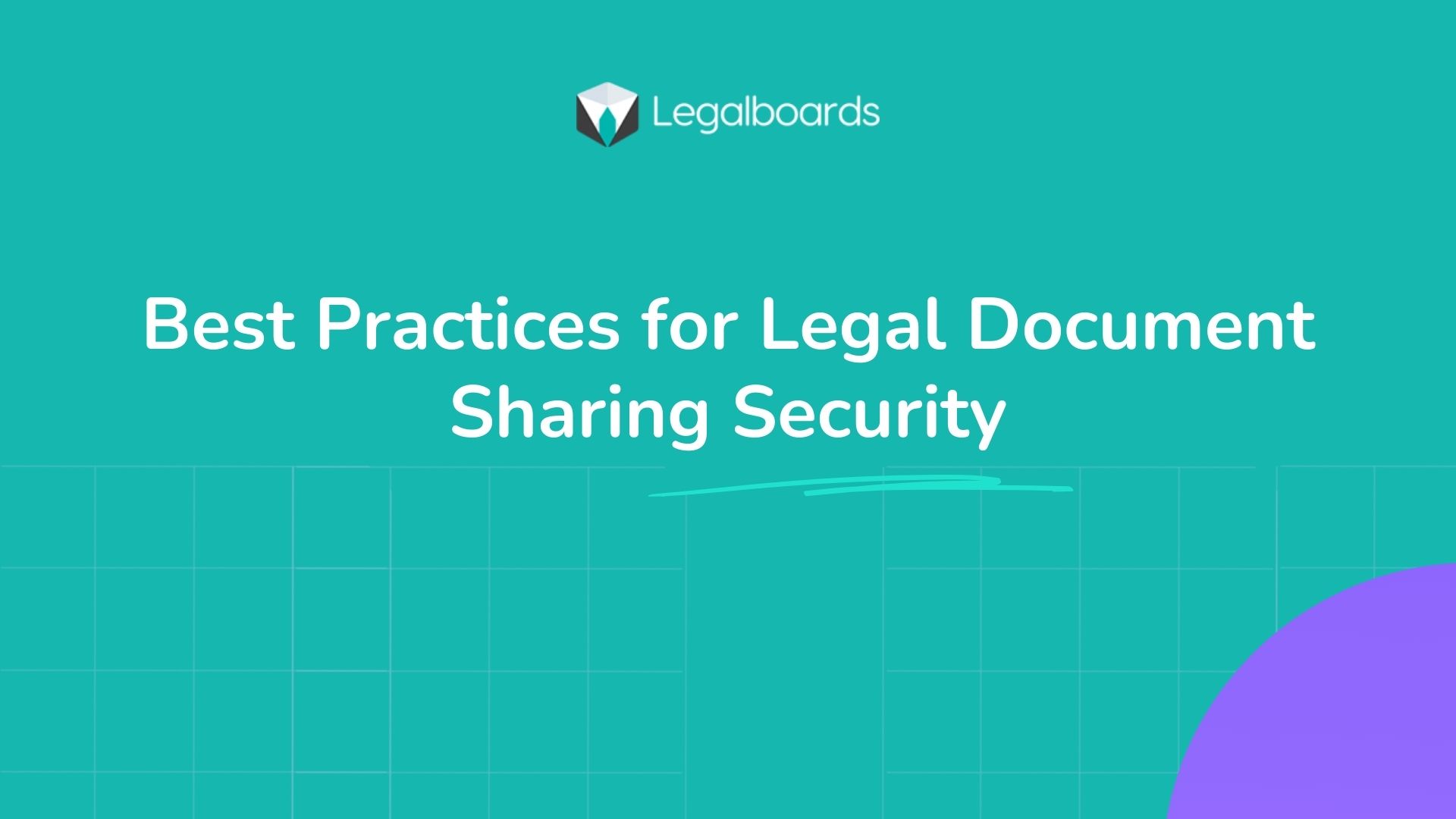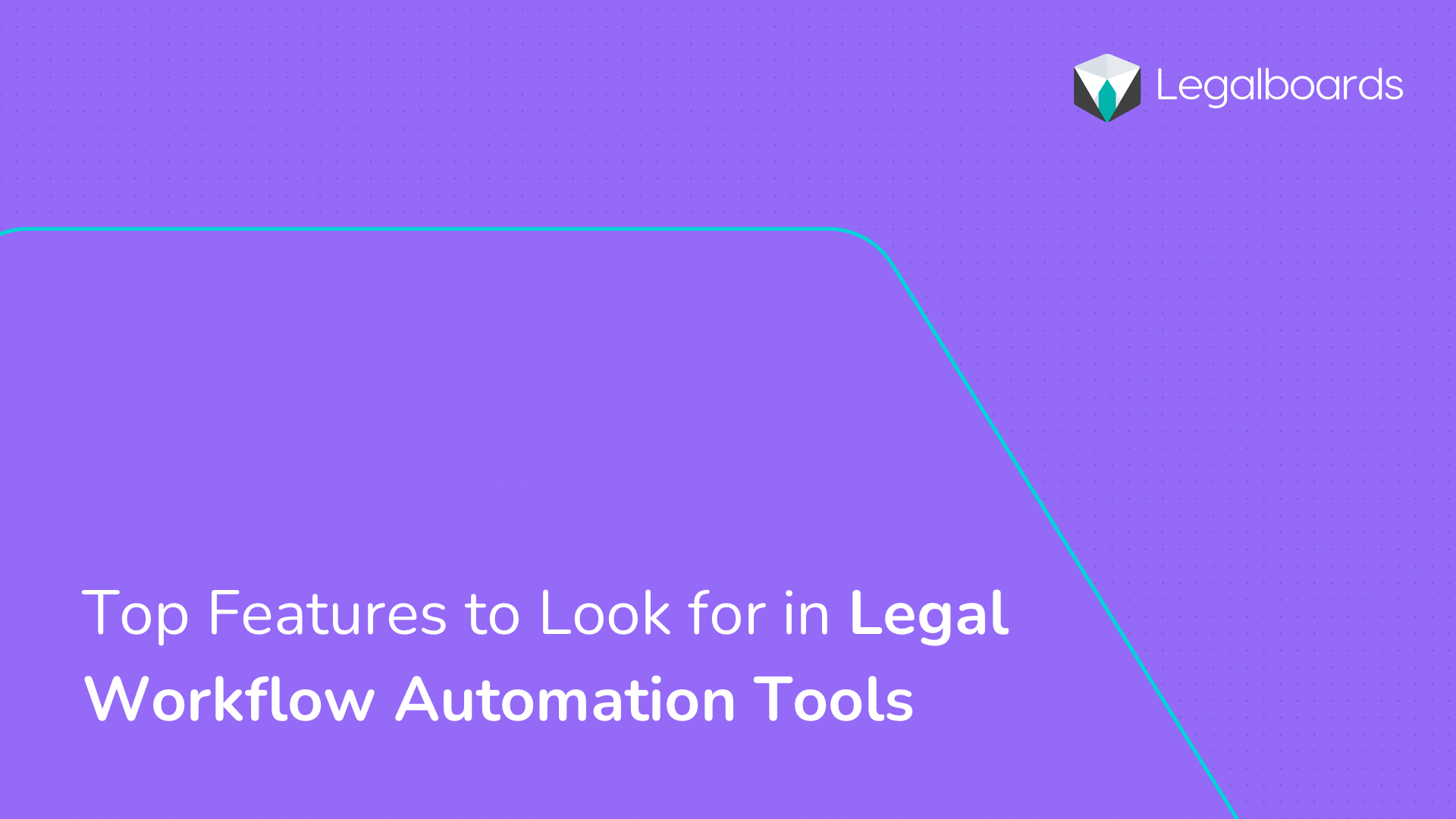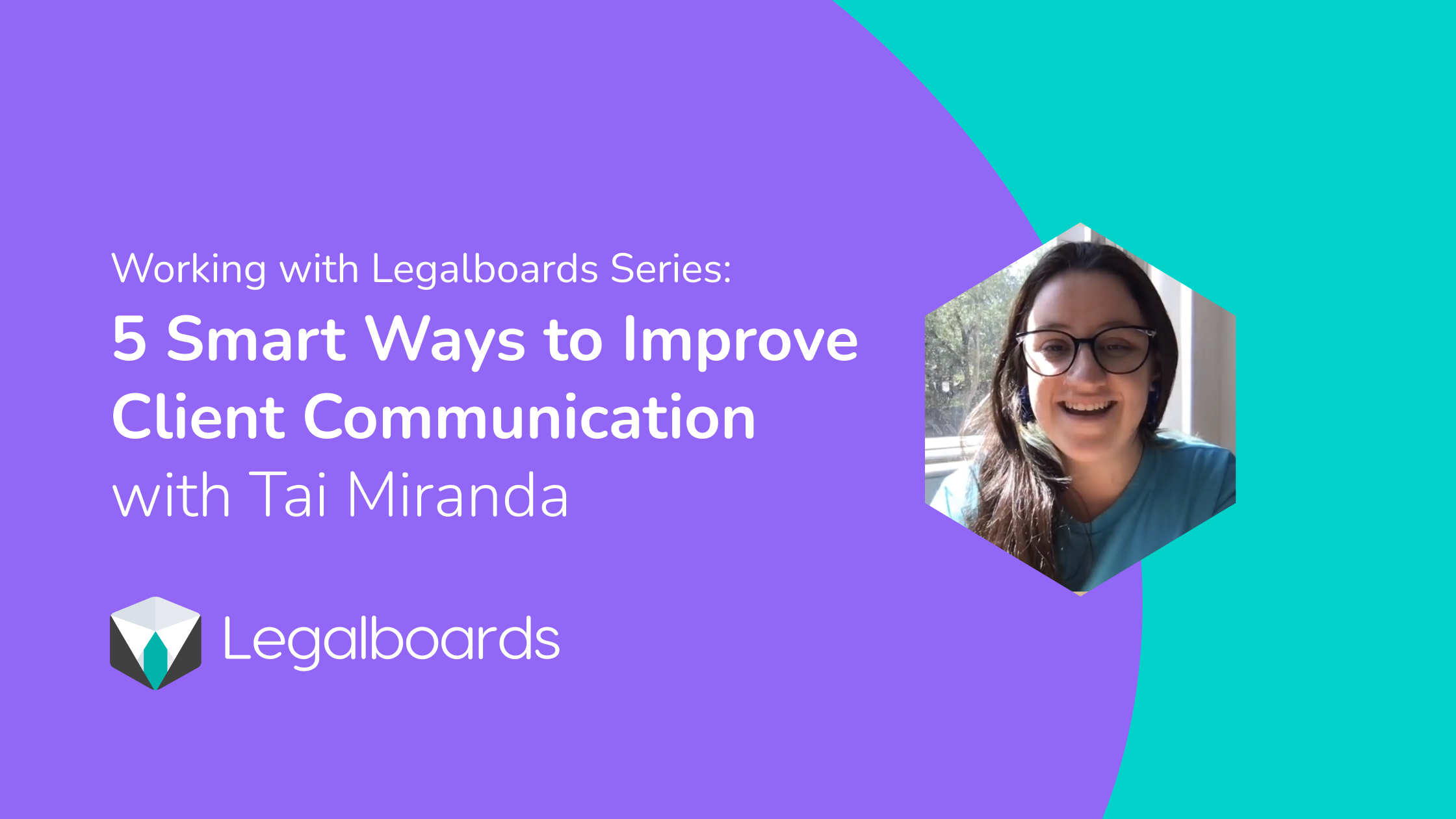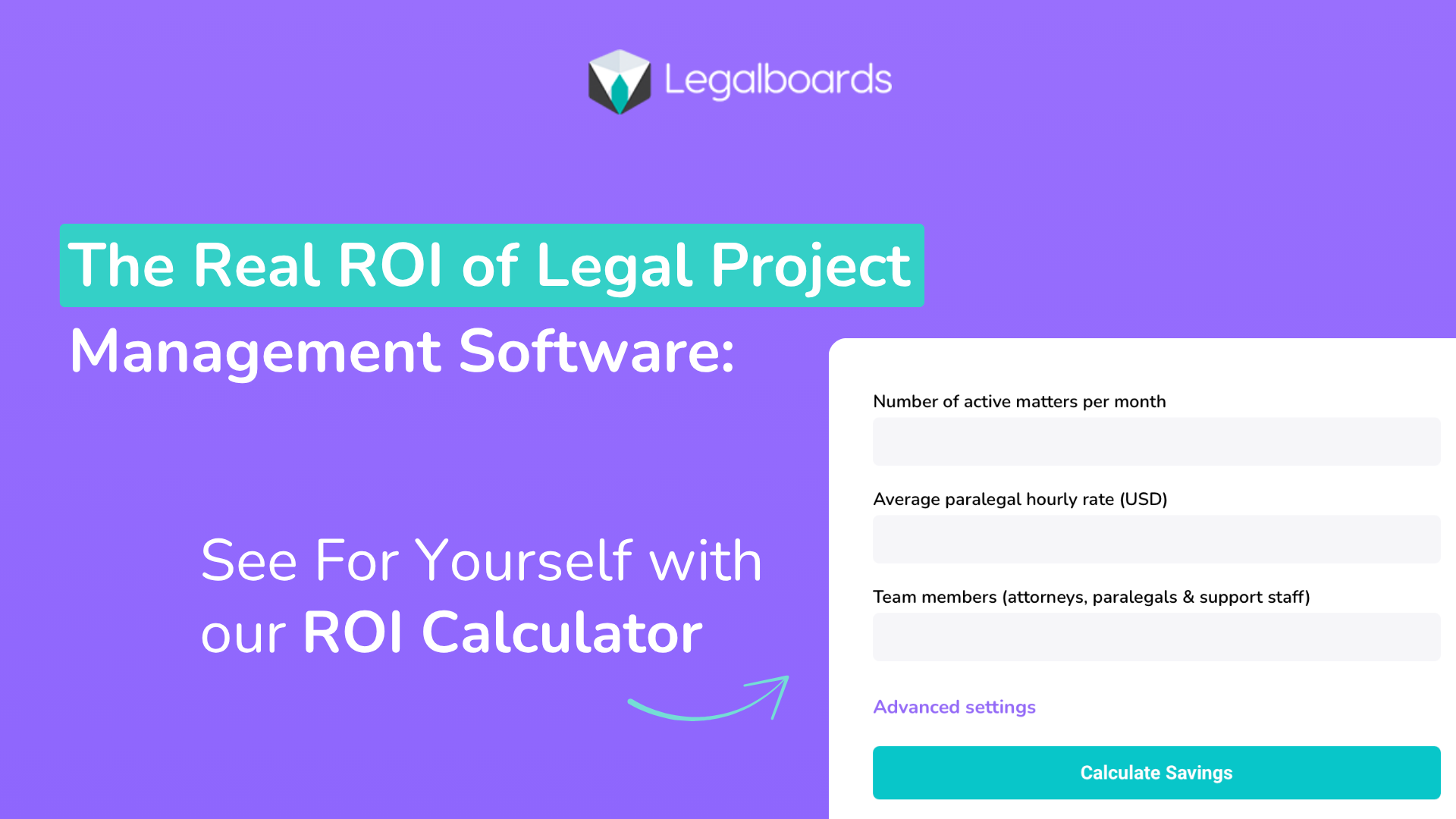Paralegals sit at the operational heart of law firms: coordinating discovery, deadlines, client communications, budgets, and the mountain of documents that define modern practice.
Legal project management (LPM) software turns that complexity into a systematic, repeatable process, freeing time for higher-value legal work, reducing risk, and helping teams deliver results on time and on budget.
This guide outlines essential information for paralegals, including:
- The uses and benefits of AI
- Strategies for collaborating with attorneys and administrative staff
- Practical AI applications in legal workflows
- Budgeting and purchasing considerations
- Different types of software available
- Compatibility issues, including integrations with platforms like Clio and Legalboards
- Best practices for implementation
- Security and compliance requirements
- Metrics to measure success
What is Legal Project Management Software?
Legal project management software helps teams plan, track, and execute legal matters the same way professional project managers would run a complex engagement.
That can mean:
- Defining phases and tasks (pleadings, discovery, depositions, motions).
- Assigning responsibilities and setting deadlines.
- Tracking time, expenses, and budgets against milestones.
- Centralizing documents, checklists, and communications.
- Automating routine workflows and reminders.
- Reporting progress and risk to attorneys and clients.
For paralegals, LPM tools are not just “nice to have.” They are the instruments that turn ad hoc task lists into a visible, auditable process, so nothing slips, clients are billed accurately, and the team can be proactive instead of reactive.
Core Uses and Benefits for Paralegals
For paralegals, legal project management software goes far beyond digital task lists. Its most immediate benefit is the ability to bring order and consistency to complex, multi-step matters.
Rather than juggling spreadsheets, sticky notes, or siloed emails, paralegals can build repeatable workflows that ensure each phase of a matter unfolds as planned.
This not only reduces the risk of missed deadlines but also creates a more predictable rhythm of work, where attorneys, clients, and support staff can rely on steady progress.
Visibility is another crucial advantage: dashboards and shared boards eliminate the mystery of “Who’s doing what,” replacing it with a transparent view of responsibilities, progress, and bottlenecks.
On a practical level, this translates into fewer last-minute scrambles, more accurate budgeting, and stronger compliance practices.
However, the benefits extend to career development as well; paralegals who master these tools become trusted experts in firm operations, able to demonstrate measurable value to both attorneys and clients.
Things Paralegals Need to Know Before Choosing Software
If you have not yet implemented LPM software, have a role in choosing a tool, and are searching for the right solution, consider the following.
Know your workflows first.
Buy software to fit your process, not the other way around. Map out a few representative matters, such as recurring tasks, required approvals, and handoff points, and use those maps as your evaluation criteria.
Identify “must-haves” vs. “nice-to-haves”.
Must-haves might include matter templates, task dependencies, time capture, and audit trails. Nice-to-haves could be AI-assisted drafting or advanced analytics. Prioritize features that directly reduce risk or save time.
Integration matters more than bells and whistles.
If your firm uses Clio for practice management or an internal CRM, confirm integrations early. Data silos undermine efficiency. The best software plays nicely with the rest of your stack.
Consider user adoption, not just features.
A powerful tool is useless if the team doesn’t use it. Choose software with an intuitive UI, good onboarding resources, and a vendor who supports training.
Security and compliance are non-negotiable.
Ask about data encryption, access controls, audit logs, and where data is hosted. Confirm the vendor’s stance on confidentiality and any certifications they hold (SOC 2, ISO 27001, etc.).
Budget for the total cost of ownership.
Licensing is only part of the cost. Include implementation, training, customization, and ongoing admin time in your budget.
Collaborating with Attorneys and Admin Staff: Practical Tips
Collaboration is where legal project management software shows its full potential, and paralegals are at the center of that ecosystem.
By adopting role-based configurations, paralegals can ensure that attorneys see only the high-level matter summaries they need, while administrative staff access the billing and scheduling views that keep the business side running smoothly.
Clear division of access helps reduce noise, making collaboration more efficient and less frustrating for everyone involved.
With LPM software, communication also becomes more strategic; instead of endless status emails, attorneys and staff can check progress directly on the platform, freeing up paralegal time for higher-value contributions.
That said, collaboration doesn’t happen solely through software. Small wins matter when introducing new systems; piloting a tool on a single type of matter and demonstrating its impact on deadlines or billing accuracy is often the most persuasive way to secure buy-in from attorneys.
Over time, the tool itself becomes a shared language for the team, streamlining how they discuss workload, track deadlines, and serve clients more consistently.
How AI Is Changing Legal Project Management
AI isn’t a magic wand, but it’s a productivity multiplier for the right tasks.
Smart task suggestions and automation.
AI can suggest next steps based on matter type or historical patterns. For example, when discovery is uploaded, it can automatically create document review tasks and assign review batches.
Document triage and tagging.
Natural language processing (NLP) can automatically tag documents for relevance, jurisdiction, or confidentiality, reducing manual sorting time.
Predictive budgeting & timeline forecasting.
Machine learning can analyze past matters to predict likely durations, costs, and staffing needs. Paralegals can utilise these forecasts to identify and proactively address budget risks.
Drafting support and checklists.
AI can help generate first drafts of routine documents or populate checklists based on contract content, freeing paralegals to check and refine instead of starting from scratch.
Intelligent search across matters.
Semantic search helps locate precedent documents, clauses, or previously used checklists, improving reuse and reducing duplication.
Practical caveat: Always validate AI outputs. Use AI to accelerate, not replace, the paralegal’s expertise and the attorney’s final review.
Budgeting for LPM Software
Budgeting for a new software platform can feel daunting, but breaking it into clear categories helps paralegals and firm managers make informed decisions.
Licensing is the most visible cost, with many platforms following a per-user subscription model, but it’s only one piece of the puzzle. Implementation often requires additional investment in data migration, template creation, and system integrations, especially for firms already using practice management tools like Clio.
Training is another critical line item; successful adoption depends heavily on how quickly attorneys, paralegals, and administrative staff can get comfortable with the system.
Allocating resources for live sessions, quick-reference guides, and ongoing support is essential.
Finally, it’s important to consider the hidden costs of maintenance: every update, integration, or customization will require some administrative oversight, whether handled in-house or through vendor support.
The upside is that the return on investment can be measured in concrete terms.
Fewer missed deadlines, reduced overtime hours, more accurate billing, and improved client satisfaction all outweigh the upfront spend when the system is properly implemented and adopted.
Types of Software and What to Look Out For
1. Matter and task management platforms
Focus: task orchestration, templates, timelines (e.g., Legalboards-style kanban, Primavera-like matter timelines).
Look for: dependency management, recurring tasks, easy template creation, and customizable workflows.
2. Practice management systems (e.g., Clio)
Focus: billing, client records, calendars, contacts, document storage.
Look for: strong matter linking, integrated time capture, and reliable billing rules. If you are already using Clio, prioritize LPM tools that integrate deeply to avoid duplicate entry.
3. Document management and automation tools
Focus: secure storage, versioning, document assembly.
Look for: metadata, full-text search, and automated naming/version control.
4. E-discovery and review platforms
Focus: document ingestion, review batching, TAR (technology assisted review).
Look for: export compatibility, tagging consistency, and defensible workflows.
5. Collaboration and communication tools
Focus: shared boards, discussions, client portals.
Look for: audit trails, permission granularity, and whether the tool centralizes notifications or creates noise.
6. Analytics and reporting tools
Focus: profitability, efficiency, staffing allocation.
Look for: pre-built reports, exportability, and the ability to create matter-level KPIs.
Software Compatibility: Integrating with Clio and Legalboards
Why integrations matter
Paralegals rely on multiple systems like time capture in Clio, task coordination in Legalboards or a dedicated LPM tool, and documents in a DMS. Integrations prevent double entry, keep billing clean, and reduce errors.
Clio + LPM.
Clio’s core strength is practice management and billing. An ideal LPM integration will:
- Sync matter metadata (client, matter number).
- Transfer time entries or provide a one-click time capture export to Clio.
- Share billing codes and ensure expense items map correctly.
- Sync calendar events and deadlines to prevent scheduling discrepancies.
Legalboards (and kanban-based LPM tools).
Legalboards is designed to visualize matters as cards and boards, and is excellent for paralegals who need a tactile view of progress. When pairing Legalboards with other systems, check:
- Whether boards can pull in documents or links from your DMS.
- If custom fields map to matters in Clio or your billing system.
- Whether completed cards can trigger events in other systems (e.g., create an invoiceable item).
Practical integration checklist
- Does the vendor offer a pre-built connector, or will you need custom API work?
- Are syncs real-time, scheduled, or manual?
- How are conflicts handled (e.g., two edits to the same field)?
- Can you map custom fields (e.g., internal matter codes)?
- What’s the rollback/restore strategy if a sync goes wrong?
Implementation and Change Management
Rolling out legal project management software requires more than simply purchasing licenses; it’s about changing how the firm operates.
A smart way to begin is by piloting the software on three to five matters that represent common workflows. These pilots allow the team to refine templates, identify gaps, and demonstrate tangible value before scaling to the entire practice.
Paralegals should play a central role in the configuration stage, as they are most closely aligned with the operational details.
Their input ensures the software reflects the realities of daily work rather than an idealized version created in isolation.
Training is another cornerstone of successful implementation.
Rather than overwhelming staff with lengthy manuals, firms should provide short, role-specific resources such as one-page guides or bite-sized training videos. Live sessions that can be recorded for later reference are also effective in making learning accessible and repeatable.
Governance plays a role, too. Establishing a team of “power users,” often paralegals, creates an internal support network that reduces reliance on the vendor while speeding up iteration and problem-solving.
Finally, implementation isn’t a one-time event; it’s an ongoing process.
Measuring performance through key metrics and holding monthly retrospectives ensures that the system continues to evolve in line with the firm’s needs.
Security, Privacy, and Compliance
When selecting and implementing legal project management software, security must be given top priority.
One of the first considerations is data residency and encryption. Firms should ask where their data is physically hosted, confirm that it is encrypted both at rest and in transit, and understand how backups are managed and maintained.
These factors are critical not only for protecting sensitive client information but also for meeting ethical obligations.
Access controls and audit logs are equally important. A system that allows role-based permissions ensures that users see only the information relevant to their responsibilities. At the same time, a reliable audit trail provides defensibility in case of disputes or audits.
Firms should also seek assurance from the vendor through third-party assessments such as SOC 2 or ISO 27001 certifications, and inquire about vulnerability testing and patch management practices.
Finally, the contractual relationship with the vendor should be carefully reviewed and evaluated.
Confidentiality clauses, clear timelines for breach notifications, and reasonable liability provisions all form the backbone of a responsible, secure partnership.
Metrics That Matter for Paralegals and Firms
Track what shows operational improvement:
- Time to matter close (average days from open to close).
- Cycle time for routine tasks (e.g., time from document upload to review assignment).
- Budget variance (budgeted vs. actual costs per matter).
- Task completion rate and overdue tasks (reducing overdue tasks is a sign of a healthy process).
- Billing realization and collection lag (are workflows speeding up invoicing?).
- User adoption rates (active users/week, percent of matters using templates).
- Error or rework incidents (less rework = better templates and clarity).
Common Pitfalls and How Paralegals Can Avoid Them
Over-customization
Too many custom fields and workflow branches make maintenance a painful process. Start simple; evolve templates slowly.
Skipping integration testing
Assuming systems will sync without testing leads to duplicate billing and lost entries. Test with real data before full rollout.
Ignoring training
Poor adoption is often a training problem, not a tooling problem. Invest in training and support.
Treating LPM as optional
When leadership doesn’t champion the tool, adoption stalls; paralegals should demonstrate wins and get attorneys to endorse use.
Practical Day-to-Day Playbook for Paralegals Using LPM Tools
- Start each morning with the board: check blocked items and upcoming deadlines.
Use templates for every common matter: don’t reinvent the checklist. - Capture time as you work: link entries to tasks/matter cards for easier billing.
- Tag documents on upload: use metadata so AI search and future reuse work effectively.
- Run a weekly matter scrub: clear completed tasks, flag overdue items for attorneys.
- Log learnings into the template: if a new step becomes regular, add it to the master checklist.
Why Paralegals Should Lead the Charge
Paralegals are natural project managers for legal matters. LPM software amplifies that role, making work more predictable, defensible, and efficient.
With the right approach (prioritizing integration, training, and gradual implementation), paralegals can transform firm operations with fewer fires to put out, more time for substantive work, and more predictable outcomes for clients and the firm.
Your Questions, Answered
What is legal project management software, and how is it different from practice management software?
Legal project management (LPM) software focuses on organizing tasks, workflows, and timelines within a legal matter, while practice management systems are broader and cover billing, calendaring, and client records. Many firms use both, with integrations ensuring smooth collaboration.
Why is legal project management software particularly valuable for paralegals?
Paralegals manage the day-to-day details of legal matters. LPM software provides tools to track deadlines, standardize processes, and improve communication, helping paralegals reduce risk and increase efficiency while demonstrating measurable value to the firm.
How does AI enhance legal project management for paralegals?
AI can assist with repetitive tasks such as document tagging, task generation, and predictive budgeting. It helps paralegals work faster and more accurately, freeing up time for higher-level responsibilities that require judgment and legal expertise.
What should paralegals consider before recommending software to their firm?
Key considerations include compatibility with existing systems (like Clio), security and compliance certifications, ease of use, and the ability to customize workflows. It’s also essential to evaluate the total cost of ownership, including training and ongoing support.
How can legal project management software improve collaboration between attorneys, paralegals, and administrative staff?
By creating shared dashboards and role-specific views, the software ensures everyone sees the information most relevant to their work. This reduces miscommunication, cuts down on redundant status updates, and keeps the entire team aligned on progress and priorities.
What are the common challenges firms face when adopting LPM software?
Challenges often include resistance to change, over-customization, and a lack of training. Addressing these with pilot projects, clear training resources, and strong paralegal involvement in configuration helps ensure smoother adoption.
How is my firm seeing a return on investment from LPM software?
Firms can track ROI by measuring reductions in missed deadlines, improved billing accuracy, faster matter completion, and increased client satisfaction. Clear metrics provide evidence of both time savings and financial gains.

